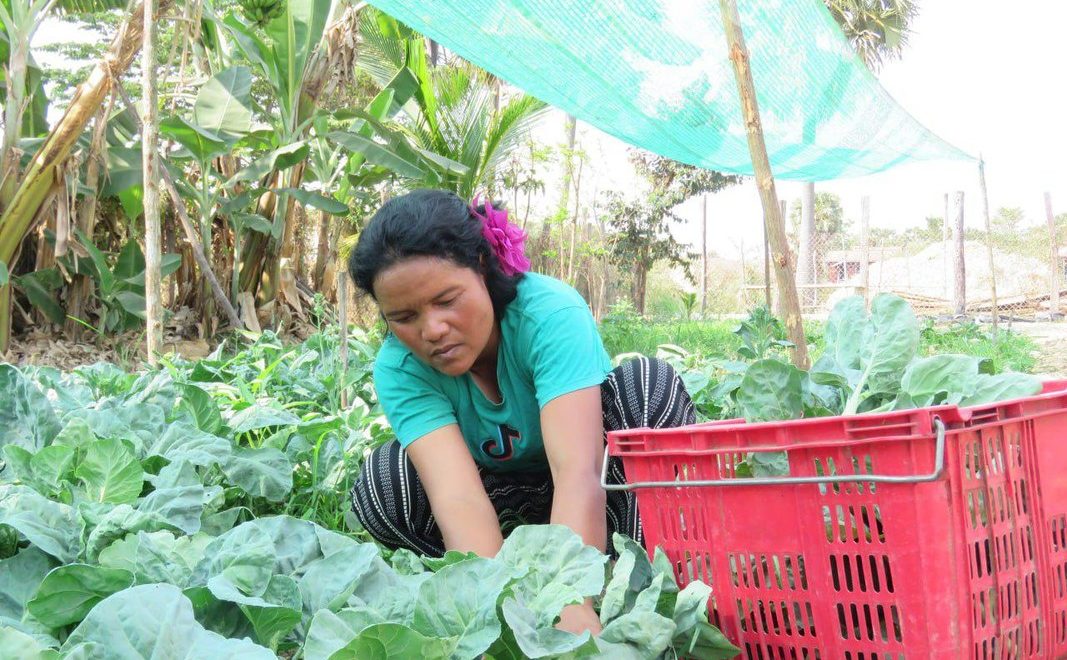In 2007/2008 and 2011, the world experienced unprecedented volatility in global agricultural commodities prices, leading to an unprecedented 1.02 billion people suffering from hunger. We are now facing the third food price crisis in 15 years. The sudden surge in food, fuel, and fertilizer prices, triggered by the Ukraine war, is a setback in achieving SDG2and the poorest communities pay the highest prices. Research conducted by ActionAid in March 2023 found that one year after Russia invaded Ukraine, the cost of food, fuel, and fertilizer in some of the world’s most vulnerable communities has escalated to crisis levels, with families spending up to ten times what they used to pay at the outbreak of the war. Women and girls are the hardest hit on their food intake, education, right to live free from child marriage, and mental health and wellbeing.
ActionAid USA has facilitated the process of developing the CSIPM report – which was launched during the CFS 51 Plenary – to strongly reaffirm the vulnerability of the current food system and the need for radical systemic change.
Who is benefitting from higher food prices?
The food price crisis in 2007/2008, 2011, and 2022 show that the global food system is highly vulnerable to global shocks. Many frame the current crisis as a “cost of living crisis,” where higher energy and food prices result from the disruption of global trade due to the war in Ukraine. This is only a partial picture of a much deeper, multi-layered, and multifaceted failure of food systems that requires a deep dive into the role of big corporations and the additional combined effects of the devastating social and economic consequences of COVID-19, conflicts, and climate change, increasing inequalities, and the destruction of ecosystems. While millions of people are struggling to find their next meal in both low-income and rich countries, and farmers have become the most vulnerable in times of crisis, agribusiness, financial speculators, and big retailers make higher profits from the food price crisis. Billionaires involved in the food and agribusiness sectors have seen their collective wealth increase by $382 billion US Dollars (45%) over the past two years, with 62 new food billionaires created in the sector since the outbreak of the COVID-19 pandemic.
The rise in fertilizer prices was not due to higher sales volumes; rather, it reflected “greedflation“: Corporations leveraged supply shocks to increase their profit margins dramatically – from roughly 20% of sales in 2020 to 36% in 2022.
Between 2021 and 2022, the food and beverage industry recorded over $155 billion US Dollars in profits, according to Forbes. Nestlé, the world’s largest food company, increased its gross profits last year by almost 3% to $46 billion US Dollars. Last year, Cargill recorded a 23% jump in revenue to $165 billion US Dollars ($6.68 billion of which was profit). Tyson Foods, the largest meat producer in the USA, nearly doubled its profits in the first quarter of 2022 due to soaring meat prices.
The international community has not yet addressed the root causes of the crisis.
The current global food system is monopolized by four mega commodity traders (Cargill, Wilmar, Louis Dreyfus, and Bunge), and much of the world’s grains feed livestock housed in CAFOs or used for biofuel production.
Biofuels impact food prices by driving up demand for feedstocks, particularly corn and wheat, which puts upward pressure on the price of food. Corn disproportionately affects other food prices because it is found in so many processed foods and is a feed for animals (impacting dairy and meat prices). Increases in the price of corn mean increases in the cost it takes to produce tortillas, a glass of milk, or a hamburger. Increased demand for biofuel also increases demand for land, exacerbating serious economic, environmental, and social problems for the most vulnerable part of the population, especially in rural areas. Policies that mandate biofuel production continue to drive demand and contribute to volatile food and commodity prices, and CSOs, including ActionAid USA, continue to mobilize to reform them.
In addition to that, Governments still fail to address the impact of speculation in agricultural commodity markets and the role of unjust trade rules that squeeze farmers into extreme competition, don’t leave space for stronger local and regional food systems and territorial markets that can better respond to local contexts and demands, and doesn’t allow for national food reserves, paving the way towards increased self-sufficiency and food sovereignty.
How food prices and small-scale farmers relate.
With the liberalization of agriculture, small-scale farmers are increasingly pushed to the margins everywhere. For producers of commodity crops (storable grains), price is determined by market logic at a global level. Corporate agribusiness controls the market of these commodities. Farmers’ income is insufficient to cover living expenses, as the globalized price – pushed down by extreme competition – is too low to cover farmers’ costs. If big enough, they are locked into a chemical and capital-intensive system that promotes the further consolidation of farmland, destroys rural communities and biodiversity, and contributes to climate change.
In countries like the United States of America (USA), family farming has steadily disappeared over the past three generations as farm policies shifted away from supply management, conservation, and supporting stable commodity and consumer prices and towards free markets, overproduction, and commodity prices that pay farmers less than what it costs to produce their crops.
Most small-scale farmers who produce for local markets and thrive through diversification, including agroecological farming, struggle daily due to a lack of public policies, an absence of appropriate markets on which to sell their produce, and the unfair competition with cheaper food at supermarkets.
Small-scale farmers in the Global South are even more at risk. The sole focus of global supply systems on a few commodities has tragically diverted attention away from native staple crops, which underpin food systems across the Global South. Southern countries have become dependent on external trade for their food needs, and with food prices skyrocketing and their currency’s depreciation, their food import bill has become unaffordable. This dependence makes these countries –already low on foreign reserves– extra vulnerable to market disruptions and price increases.
Ensuring the transition to a sustainable food system through agroecology and decent livelihood for farmers.
ActionAid research has found that communities in 12 of the 14 countries surveyed said they were practicing agroecology to save on crop production and mitigate climate change impacts. Those who resorted to agroecological methods (such as composting) saved production costs and minimized the impact of climatic pressures. A plethora of literature highlights that agroecological methods are cheaper and more productive compared to industrial agriculture, in addition to offering resilience against climatic challenges in agriculture.
Based on territorially based processes and the co-creation of knowledge, agroecological pathways provide contextualized solutions to local problems and reduce dependence on external inputs. Transformation towards agroecological models needs to be accompanied by regulatory and policy frameworks to phase out input-dependent, fossil fuel-based agricultural systems, including through the progressive ban of highly hazardous pesticides and synthetic fertilizers.
Many farmers worldwide have mobilized around an agenda to promote supply management, fair farmgate prices for farmers, and food reserves as a strategy to support farmers’ decent livelihood. Informed by the long history of parity programs, principles, and movements in the USA and the Minimum Support Price (MSP) system in India, as well as by the “quota systems” as measures to govern the offer and the price in EU, farmers’ movements are advocating For a system in which farmers receive parity prices combined with supply management and food reserves to create the stability of both farm prices and consumer prices.
The Committee on World Food Security will discuss all of this at its Plenary session, and we are ready to advance our analysis and demands for a transition to a food system that respects the people and the environment.









